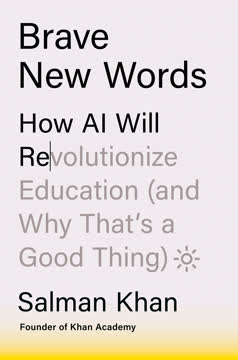重点摘要
1. 理解三种对话类型
实用的决策对话关注“这到底关乎什么?”情感对话探讨“我们的感受如何?”社交对话则追问“我们是谁?”
对话分类。 每一次有意义的交流都属于这三类之一,且在讨论过程中常常在它们之间转换。“这到底关乎什么?”的对话聚焦于实际事务和决策,涉及计划分析、选择评估和目标确定。“我们的感受如何?”的对话关注情绪、信念与价值观,允许展现脆弱,促进更深层的连接。“我们是谁?”的对话则探索社会身份、关系以及我们在不同群体中的定位。
识别对话类型。 明确自己正处于哪种对话类型,是实现有效沟通的关键。它帮助你调整沟通方式以契合对方,确保你关注的是讨论的核心内容。例如,在情感对话中直接提出实用方案,可能被视为忽视感受;而在决策对话中过于情绪化,则可能显得缺乏重点。
2. 匹配原则:调整沟通风格以达成共鸣
有效沟通需要识别对话类型,并相互匹配。
模仿与适应。 匹配原则强调,我们应调整自己的沟通风格以配合对方。这不仅仅是简单模仿对方的言辞或语气,而是要与对方的情绪状态、能量水平和对话目标保持一致。当我们与对方风格相符时,便能建立起融洽与理解,使对话更具成效和满足感。
实际应用。 运用匹配原则时:
- 观察对方的语调、节奏和能量
- 注意其使用的语言类型(情感化、分析性等)
- 相应调整自己的沟通方式
- 随着对话进展灵活转换策略
此原则在职场、谈判和冲突解决中尤为重要,有助于建立信任和相互理解。
3. 深入提问的力量
想要与人建立联系,就问问他们的感受,然后分享自己的情绪。
促进脆弱感。 深入的问题超越表面寒暄,邀请对方分享信念、价值观和经历。这类问题为展现脆弱创造机会,而脆弱是建立真诚连接的关键。通过询问对方的感受、梦想或挑战,我们传递出对其内心世界的关注。
示例与益处。 有效的深入问题包括:
- “你旅程中最具挑战性的部分是什么?”
- “那段经历如何塑造了你的世界观?”
- “你最看重人际关系中的什么?”
提问深层问题的好处:
- 建立信任与亲密感
- 促进自我反思
- 引发更有意义且难忘的对话
- 帮助打破刻板印象和偏见
记得也要分享自己的想法和感受,形成平衡的脆弱交流。
4. 超越言语的倾听:识别非语言信号
要真正听懂一个人,我们还需关注其非语言的情绪表达——他们发出的声音、手势、语调与节奏、身体姿态及面部表情。
非语言沟通。 我们沟通中很大一部分通过非语言信号传递,包括面部表情、身体语言、语音语调,甚至沉默。关注这些信号,能帮助我们更全面地理解对方真实的意图,即使言辞表面有所不同。
关键观察要素:
- 面部表情(微笑、皱眉、扬眉)
- 身体姿势(开放或封闭,前倾或后仰)
- 手势(手部动作、点头、耸肩)
- 语调(音高、音量、语速)
- 眼神交流(是否对视)
- 身体距离
提升解读非语言信号的能力,使我们成为更具同理心的倾听者和更有效的沟通者。此技能在跨文化交流中尤为重要,因语言障碍可能存在。
5. 通过情商驾驭冲突
与人沟通,需先建立连接。当我们吸收对方所说,对方也理解我们时,说明双方的大脑在某种程度上达成了同步。
情绪同步。 冲突中,人们往往只关注赢得争论或证明观点正确。然而,真正的解决源于情绪的对齐。这意味着识别并承认冲突背后的情绪,无论是自己还是对方的。如此,才能为相互理解和协作解决奠定基础。
情绪对齐策略:
- 练习积极倾听,关注言语背后的情绪
- 用“我”语句表达感受,避免指责
- 承认对方观点,即使不同意
- 寻找共同点和共享目标
- 情绪激烈时适当休息,防止升级
- 运用“循环理解”技巧确保沟通清晰
以情商处理冲突,能将对立转化为成长和关系强化的契机。
6. 社会身份对沟通的影响
我们的社会身份深刻影响着我们的言语、听觉和思维,即便我们不愿承认。
身份影响。 种族、性别、年龄、职业和文化背景等社会身份,塑造了我们的沟通风格和认知。这些身份既能建立联系,也可能成为沟通障碍,影响信息的解读和他人对我们的看法。
关键注意点:
- 认识自身社会身份及其对沟通的影响
- 理解他人基于不同身份的不同经历和视角
- 避免基于刻板印象或泛化的假设
- 练习文化谦逊,开放学习不同观点
- 使用尊重多元身份的包容性语言
- 讨论敏感话题时,承认社会身份对观点和经历的作用
理解社会身份的影响,有助于跨多元群体更有效沟通,营造包容环境。
7. 为艰难对话营造安全空间
“我们是谁?”的对话或许艰难,却至关重要。
促进开放。 涉及身份、特权或争议话题的艰难对话,需要安全且支持性的环境。营造此空间需制定明确规则,倡导相互尊重,鼓励开放心态。当人们感到无惧评判或报复时,才能展开更诚实且富有成效的交流。
安全空间的关键要素:
- 建立尊重沟通的基本准则
- 鼓励积极倾听与同理心
- 承认不适感是成长的自然部分
- 适当时允许匿名或保密
- 确保所有声音均有表达机会
- 提供进一步学习和支持的资源
通过为艰难对话创造安全空间,我们能解决重要议题,促进跨差异理解,推动个人与集体成长。此方法在职场、教育和社区组织中尤为关键,助力多元观点共存与协作。
最后更新日期:
FAQ
What's Supercommunicators about?
- Focus on Communication Skills: Supercommunicators by Charles Duhigg explores the art of effective communication, emphasizing deeper connections through understanding social identities and emotional cues.
- Three Types of Conversations: Duhigg identifies three primary conversation types: practical, emotional, and social identity discussions, which help navigate interactions more effectively.
- Strategies for Connection: The book provides practical strategies, such as asking open-ended questions and practicing active listening, to foster deeper connections.
Why should I read Supercommunicators?
- Enhance Relationships: The book offers insights to improve interpersonal skills, leading to stronger personal and professional relationships.
- Navigate Difficult Conversations: It provides strategies for handling tough discussions, relevant in today's polarized environment.
- Learn from Experts: Insights from psychologists and communication experts enrich the reader's understanding of effective communication.
What are the key takeaways of Supercommunicators?
- Understanding Conversation Types: Recognizing practical, emotional, and social conversations helps align communication styles for effective dialogue.
- Importance of Social Identities: Social identities shape communication; understanding them aids in navigating conversations.
- Active Listening and Questions: Asking open-ended questions and practicing active listening lead to deeper understanding and connection.
What are the best quotes from Supercommunicators and what do they mean?
- “Every meaningful conversation is made up of countless small choices.”: Highlights the importance of engagement choices in effective communication.
- “The single biggest problem with communication is the illusion it has taken place.”: Emphasizes the need for active listening and ensuring understanding.
- “It is not our differences that divide us, it is our ability to recognize, accept and celebrate those differences.”: Encourages embracing diversity for stronger connections.
What is the Matching Principle in Supercommunicators?
- Definition of Matching Principle: It involves recognizing the conversation type and adjusting communication style accordingly for effective dialogue.
- Importance of Alignment: Miscommunication often occurs when conversation types are mismatched; alignment fosters productive dialogue.
- Practical Application: Duhigg provides examples of applying the principle in work and personal contexts for meaningful conversations.
How can I improve my emotional conversations as suggested in Supercommunicators?
- Ask Deep Questions: Delve into beliefs and values to invite vulnerability and foster emotional connection.
- Practice Active Listening: Pay attention to nonverbal cues and emotional expressions to show engagement.
- Use Looping for Understanding: Summarize and confirm what the other person has said to demonstrate listening and clarify misunderstandings.
What is the Fast Friends Procedure mentioned in Supercommunicators?
- Overview of Fast Friends Procedure: A series of thirty-six questions designed to foster intimacy and connection between strangers.
- Mechanism of Connection: Encourages sharing vulnerabilities and reciprocal self-disclosure, creating emotional contagion.
- Application in Real Life: Principles can be applied by asking deep questions and encouraging open dialogue in various contexts.
How does Supercommunicators suggest handling conflicts in conversations?
- Acknowledge Emotions: Recognizing and discussing emotions can de-escalate tensions and foster understanding.
- Use Looping for Understanding: Summarizing thoughts and feelings helps clarify and demonstrate listening.
- Focus on Common Goals: Identifying shared interests shifts conversations from adversarial to collaborative problem-solving.
What role does vulnerability play in Supercommunicators?
- Foundation of Connection: Vulnerability is key to meaningful conversations, encouraging reciprocity and deeper connections.
- Emotional Contagion: Sharing vulnerabilities can trigger emotional contagion, enhancing bonds between partners.
- Creating Safe Spaces: Active listening and empathy create environments where individuals feel safe to express feelings.
How does Supercommunicators address online communication?
- Criticism in Public Forums: Negative feedback online often backfires; Duhigg advises against public criticism to maintain positivity.
- Importance of Tone and Context: Mindfulness of tone and context leads to better communication outcomes.
- Strategies for Improvement: Practical tips include using gratitude and hedging comments for constructive digital dialogue.
What is the significance of the Motivational Interviewing method in Supercommunicators?
- Guiding Conversations: Encourages self-reflection and personal insight by exploring beliefs and motivations.
- Building Rapport: Establishing a connection leads to more productive and meaningful conversations.
- Facilitating Change: Effective in encouraging behavior change by understanding perspectives and guiding informed decisions.
How can I apply the concepts from Supercommunicators in my daily life?
- Practice Active Listening: Listen attentively, paying attention to verbal and nonverbal cues to understand emotions.
- Ask Meaningful Questions: Incorporate deep questions to encourage vulnerability and emotional connection.
- Be Mindful of Conversation Types: Recognize conversation types and adjust approach to prevent misunderstandings and foster better communication.
评论
《超级沟通者》评价不一,既有对其有效沟通见解的赞赏,也有对其政治倾向的批评。读者认可书中实用的建议和真实的案例,但也觉得部分内容重复或缺乏新意。许多人称赞杜希格的写作风格及本书提升人际关系的潜力。批评者则认为书中对复杂问题的简化过度,且未必适用于所有情境。尽管存在分歧,大多数评论者仍认可该主题的重要性,并认为本书在沟通技巧的探讨上具有一定价值。
Similar Books

















